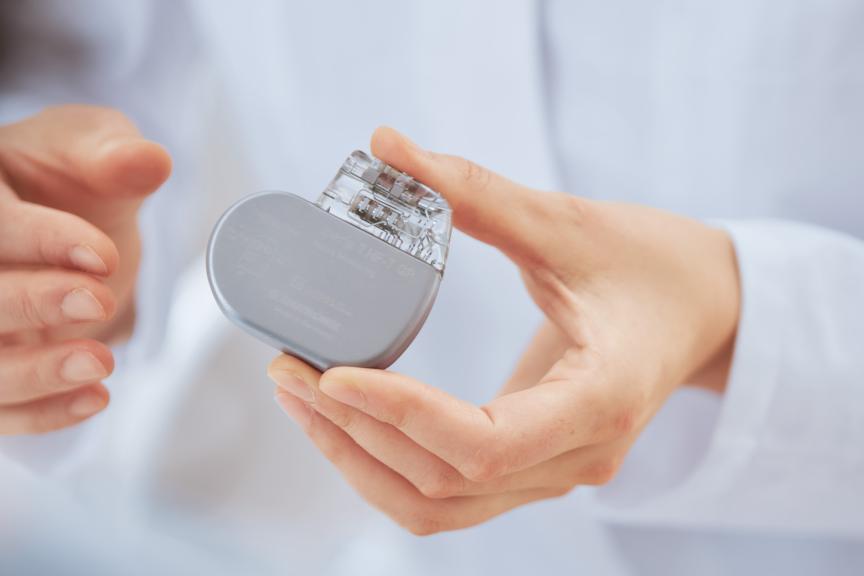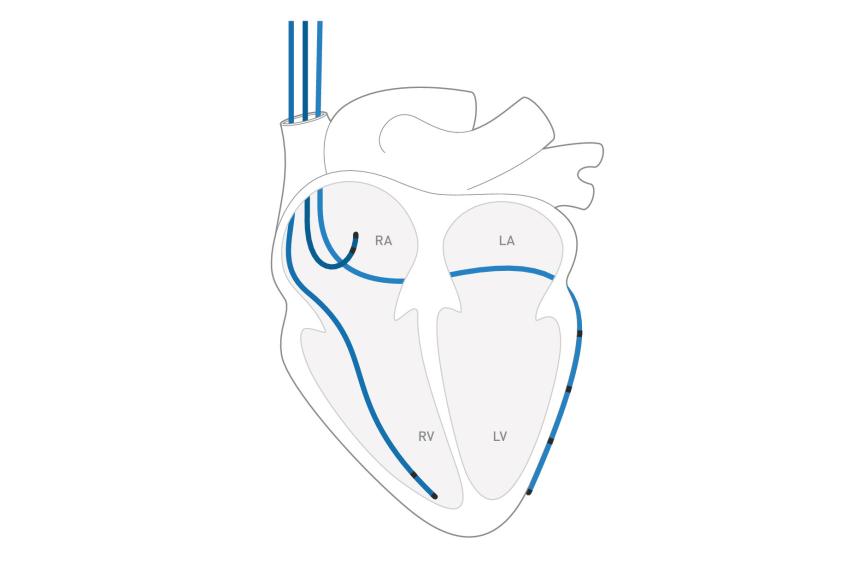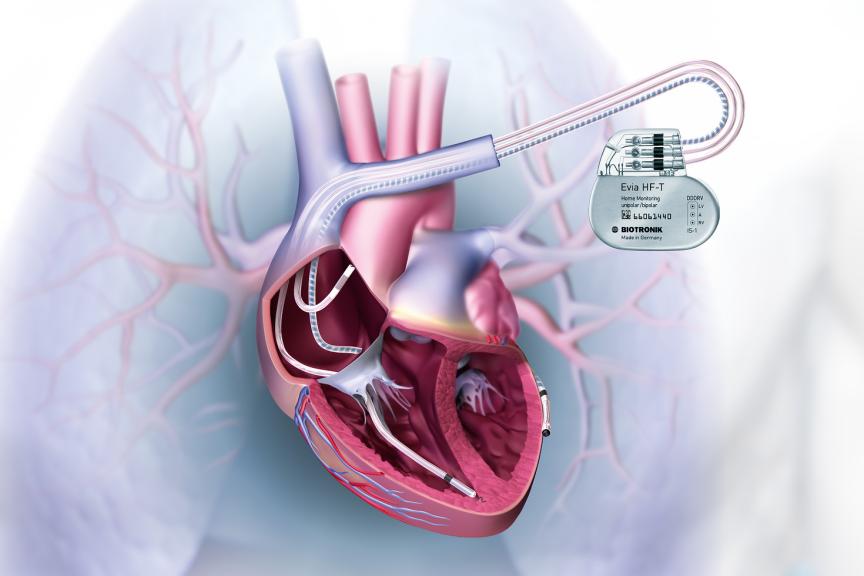What Is A CRT?
In patients with a weakened heart muscle, the heart tries to make up for lost pumping power, which can lead to an inefficient, irregular heartbeat in which the heart’s lower chambers no longer work in tandem. As a result, the body can lack enough oxygen-rich blood and patients may experience dizziness, fatigue or even fainting.
Therapy for heart failure aims to improve the heart’s ability to pump oxygen-rich blood through the body. It often consists of a combination of different interventions, such as lifestyle changes, medication, or a cardiac implant. Cardiac resynchronization therapy devices support the weakened heart by monitoring the heart’s rhythm, detecting irregularities, and correcting them with electrical impulses when necessary.
Cardiac resynchronization therapy devices include:
Cardiac resynchronization therapy with a pacemaker (CRT-P). The device is used for the resynchronization of the two ventricles.
They are small, battery-powered devices that are implanted near the collarbone. They consist of a pulse generator as well as three special wires, called leads, that connect the heart with the pulse generator. They relay information about the heart's rhythm back to the pulse generator and carry small electrical pulses from the device to the heart.
Cardiac resynchronization therapy with a pacemaker and an ICD (CRT-D). This device may be recommended for people with heart failure who also have a risk of sudden cardiac death. It can detect dangerous heart rhythms and deliver a stronger shock of energy than a pacemaker can deliver. This shock can reset the heartbeat.





